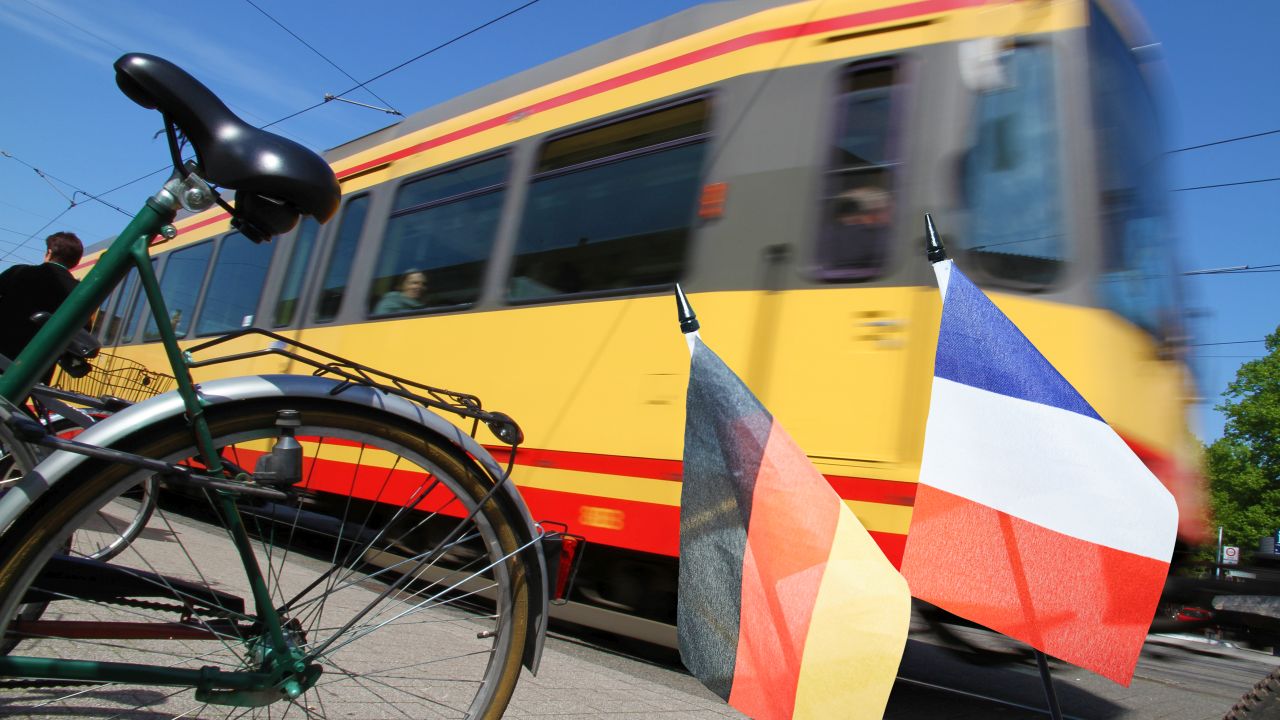
On November 17, 2021, a colloquium at Freiburg University completed the German-French SuMo-Rhine project coordinated by Karlsruhe Institute of Technology (KIT). In the past three years, nine project partners and more than 20 associated partners worked on improving the basis for sustainable mobility in the Upper Rhine region. The results, namely, the "Municipal Information System for Sustainable Mobility," may also point the way for other regions.
What do municipalities and regions need to sustainably develop the mobility sector? This question has now been answered for the dynamic, trinational Upper Rhine Metropolitan Region. Among the project partners were KIT with its German-French Institute for Environmental Research (DFIU) and its Institute for Economic Policy Research (ECON), the École d'architecture (ENSAS) in Strasbourg, the Laboratoire image, ville, environnement (LIVE-UNISTRA) of Strasbourg University, the Centre national de la recherche scientifique (CNRS), the University of Haute-Alsace, the Chair of Remote Sensing and Landscape Information Systems (FeLis) of Freiburg University, the University of Koblenz-Landau, the City of Lörrach, and other institutions. Their collaboration in "SuMo-Rhine - Promoting Sustainable Mobility in the Upper Rhine Region" gave rise to the data-driven Municipal Information System for Sustainable Mobility (KINaMo) among others. Based on 61 criteria (indicators), KINaMo acquires and evaluates municipal mobility offers. It also reveals how the offers can be made more sustainable and, hence, safer, economically more efficient, environmentally more compatible, and more oriented on demands.
With the support of HERE, an online geodata service, municipalities and the public were provided for the first time with the necessary empirical data on e.g. timetables, transport infrastructures, noise and pollutant emissions, or accident statistics in a continuous, comparable, and automated manner. "With SuMo-Rhine, the Upper Rhine Region couldbecome a blueprint for sustainable mobility development in other European border regions," says Professor Wolf Fichtner, Head of KIT's German-French Institute for Environmental Research, who also headed the three-year project.
Apart from the development of KINaMo, empirical analyses were made to obtain information on political agendas and challenges in the Upper Rhine Region. It became obvious that transport policies on the municipal level focus on shifting the demand to environmentally friendlier transport means, while avoiding transport is of minor importance. Studies also concentrated on the choice of transport means for going to work, the reasons for this choice, and transport-related perception of the Covid pandemic. Such analyses not least allow for a comparison of the situations in Germany, France, and Switzerland, the three countries in the Upper Rhine Region.
Local and Cross-border Applications
In the second central field of action in the project, the new indicator system was tested and optimized in real contexts. One setting was the German city of Lörrach that is located in a valley just outside of the Swiss city of Basel. To master its special mobility challenges, the city's practitioners contributed their municipal perspective to the development of KINaMo from the very beginning.
Urban development projects were evaluated with the city of Strasbourg being used as an example. For evaluation, a model based on the indicator system was applied. For the municipal association of Strasbourg, scientists developed two different sustainable mobility scenarios to test the suitability of the indicator system for assessing future plans. In the sub-project "SuMo-Atlas", a map of the current mobility status in the Upper Rhine Region was generated on the basis of the indicator system again.
As a good example of cross-border mobility, a tramline commissioned in 2017 was analyzed. It connects Basel in Switzerland with the French municipality of St. Louis about five kilometers away. "In the Upper Rhine Region, cross-border mobility is a frequent phenomenon and should not prevent sustainable mobility concepts," says Nora Baumgartner (DFIU), scientific coordinator of the project. "In border regions in particular, synergies should be leveraged, potentials used, and joint learning enforced in order to reduce environmental impacts."
More information on SuMo-Rhine and KINaMo: https://sumo-rhine.com/en/
Click here for the DFIU website: https://www.dfiu.kit.edu/english/index.php
Being "The Research University in the Helmholtz Association", KIT creates and imparts knowledge for the society and the environment. It is the objective to make significant contributions to the global challenges in the fields of energy, mobility, and information. For this, about 9,600 employees cooperate in a broad range of disciplines in natural sciences, engineering sciences, economics, and the humanities and social sciences. KIT prepares its 23,300 students for responsible tasks in society, industry, and science by offering research-based study programs. Innovation efforts at KIT build a bridge between important scientific findings and their application for the benefit of society, economic prosperity, and the preservation of our natural basis of life. KIT is one of the German universities of excellence.






